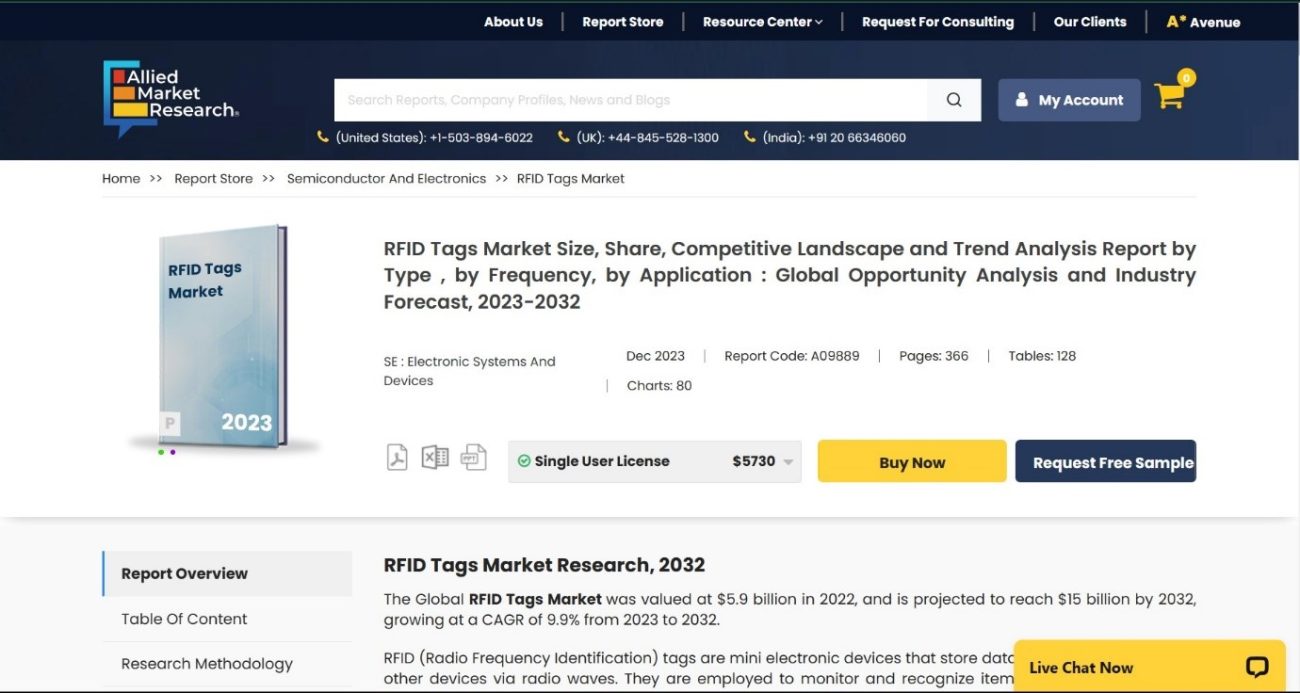
The RFID Tags Market has experienced substantial growth, valued at $5.9 billion in 2022 and forecasted to reach $15 billion by 2032, showcasing a CAGR of 9.9%. RFID tags, miniature electronic devices utilizing radio waves for data communication and storage, play a pivotal role in various sectors like agriculture, healthcare, logistics, retail, and security.
These tags, comprising microprocessors and antennas, are integral to RFID systems, facilitating efficient data collection and item identification. The market is segmented based on applications (e.g., retail, transportation), tag types (active, passive), and frequencies (low, high, ultra-high). Major regions contributing to market growth include North America, Europe, Asia-Pacific, and LAMEA.
Factors driving market expansion include the rise in e-commerce, integrated retailing, IoT integration, and big data analytics. Additionally, advancements in RFID technology, such as improved security, durability, and customization, cater to diverse industry needs. Challenges like high initial investment costs and competition from alternative technologies (e.g., barcodes, QR codes) are also noted.
Key players like Avery Dennison, HID Global, NXP Semiconductors, GAO RFID Incorporated, and Zebra Technologies are actively involved in product innovations, acquisitions, partnerships, and geographical expansions to enhance market presence. Notable developments include Avery Dennison’s AD Maxdura Flexible Laundry UHF Hard Tag, HID Global’s acquisition of GuardRFID for healthcare RTLS, and NXP Semiconductors’ PN7642 for enhanced NFC transactions.
The report observes that the market benefits stakeholders with analytical insights, market size estimations, trend analyses, and competitive landscapes. Increasing demand for inventory management, IoT integration, and personalized RFID solutions presents lucrative opportunities amidst challenges like initial costs. Overall, the RFID Tags Market reflects a dynamic landscape driven by technological advancements, industry diversification, and strategic initiatives by key players.
